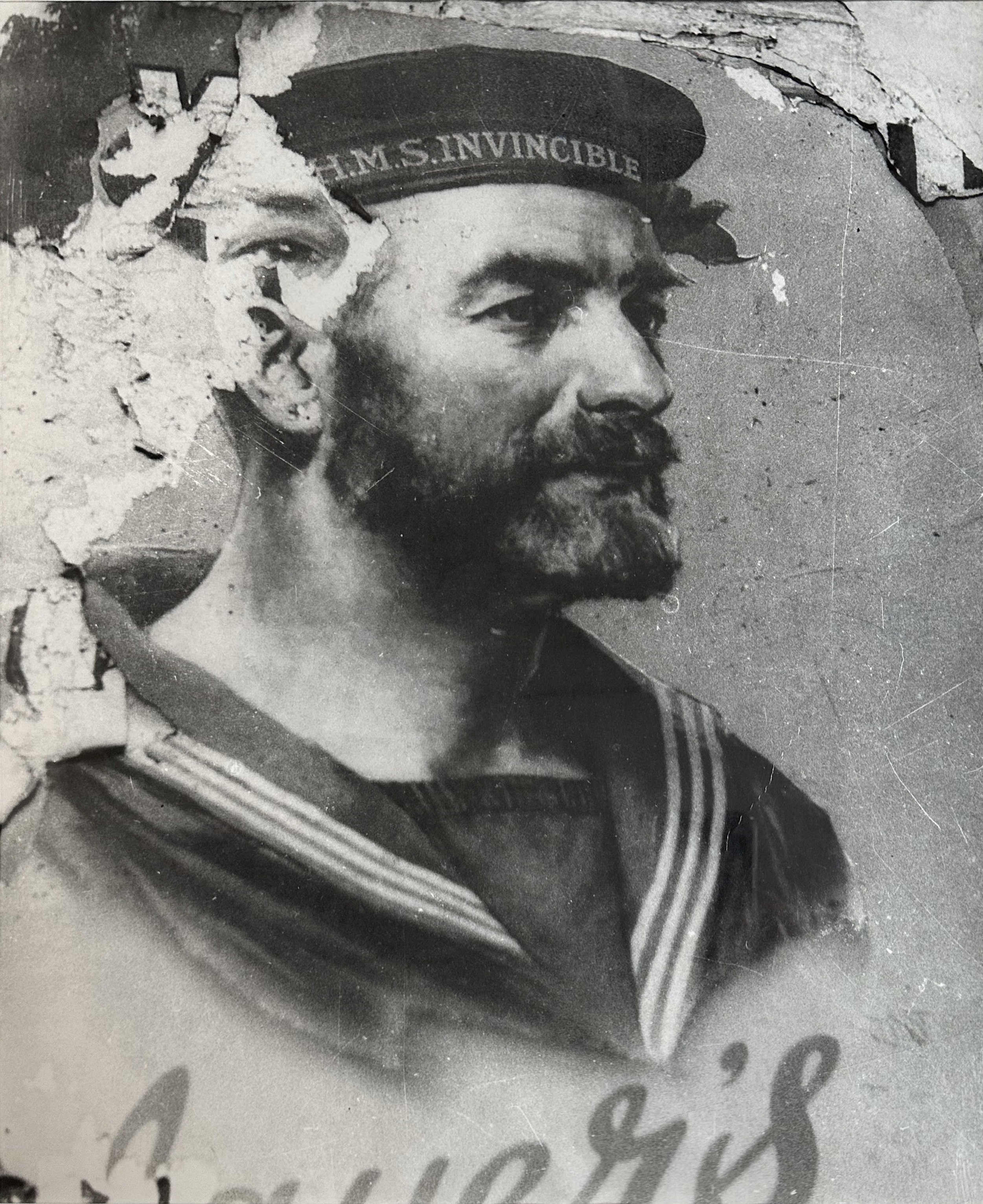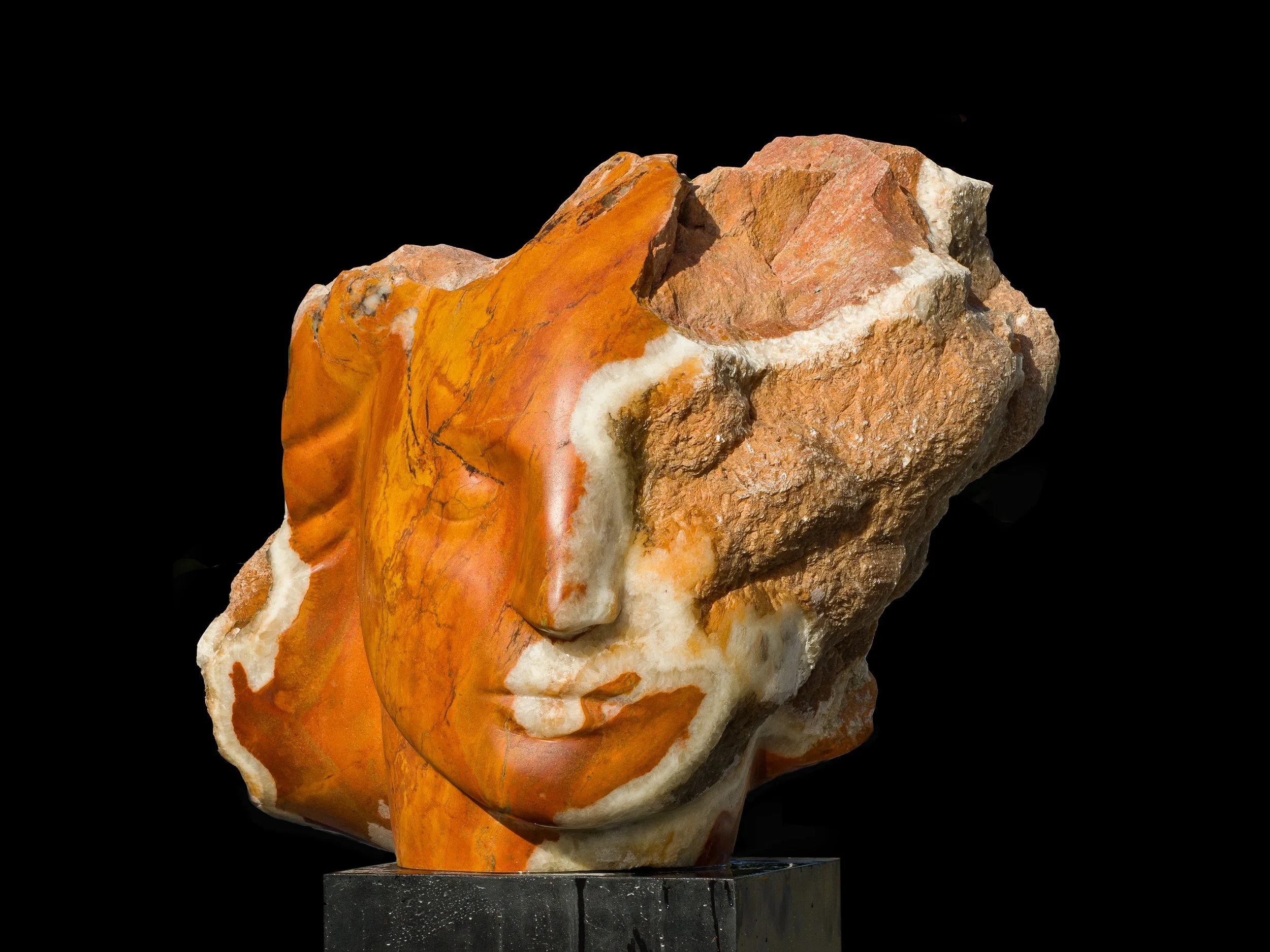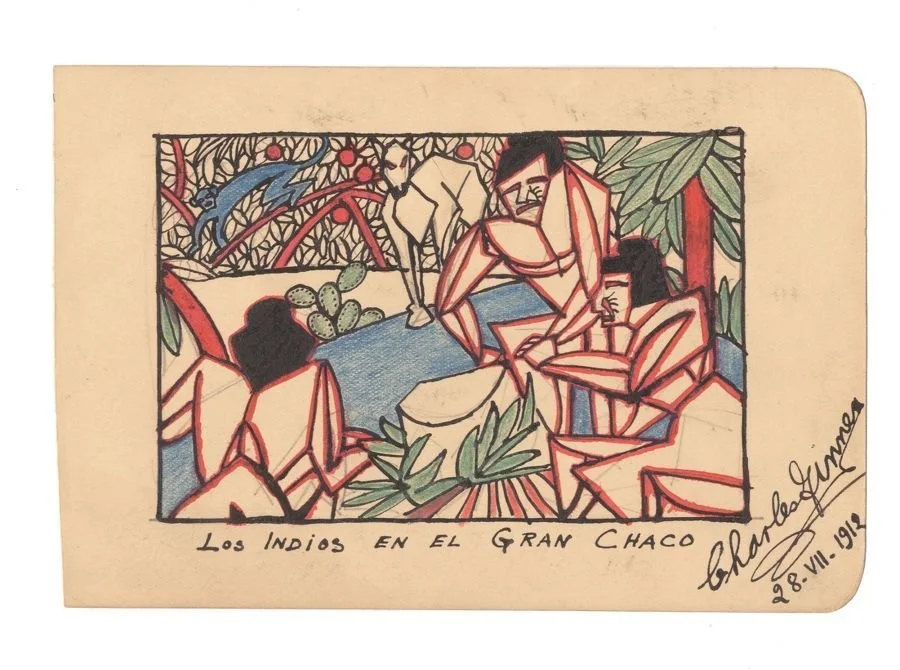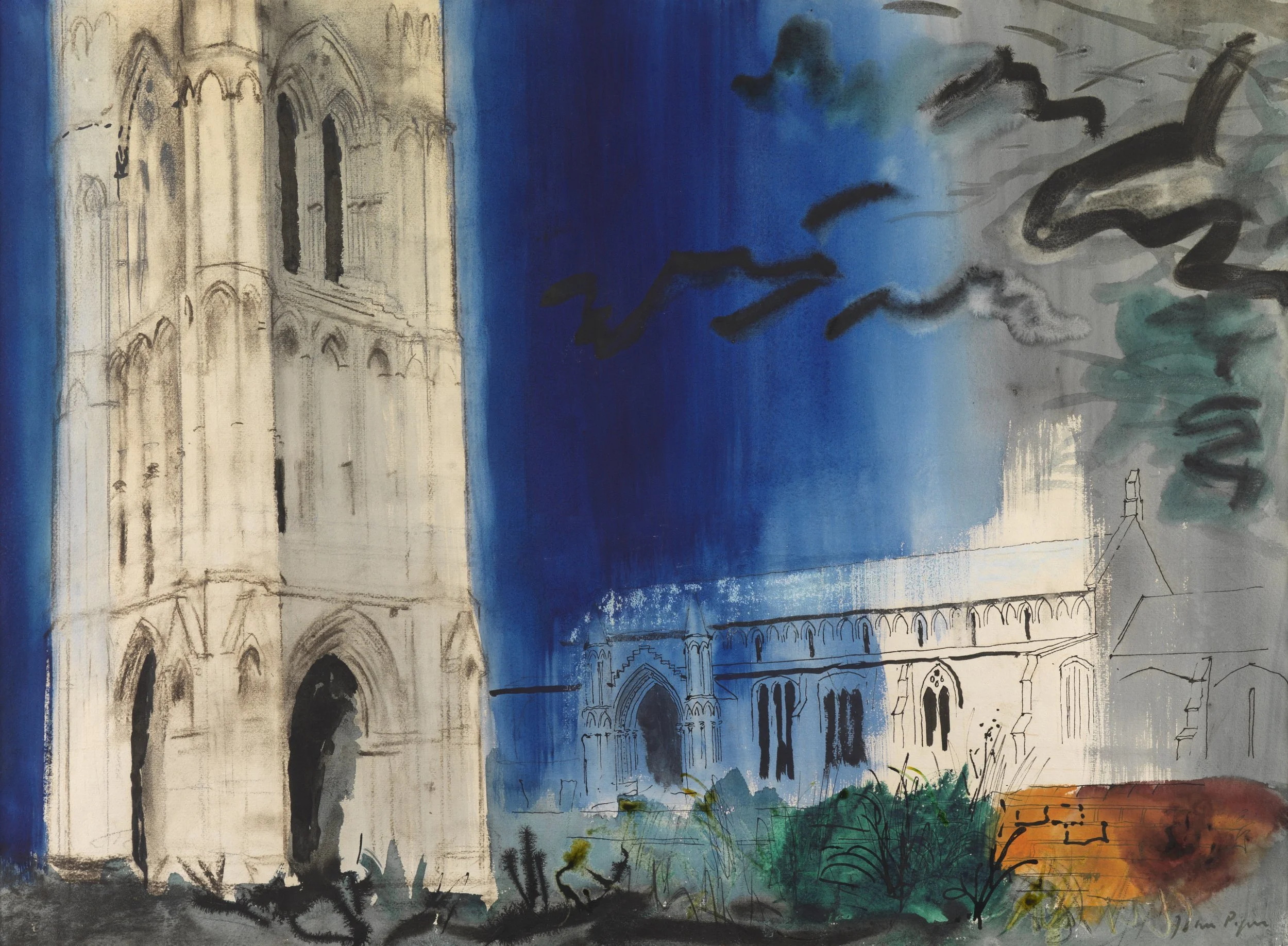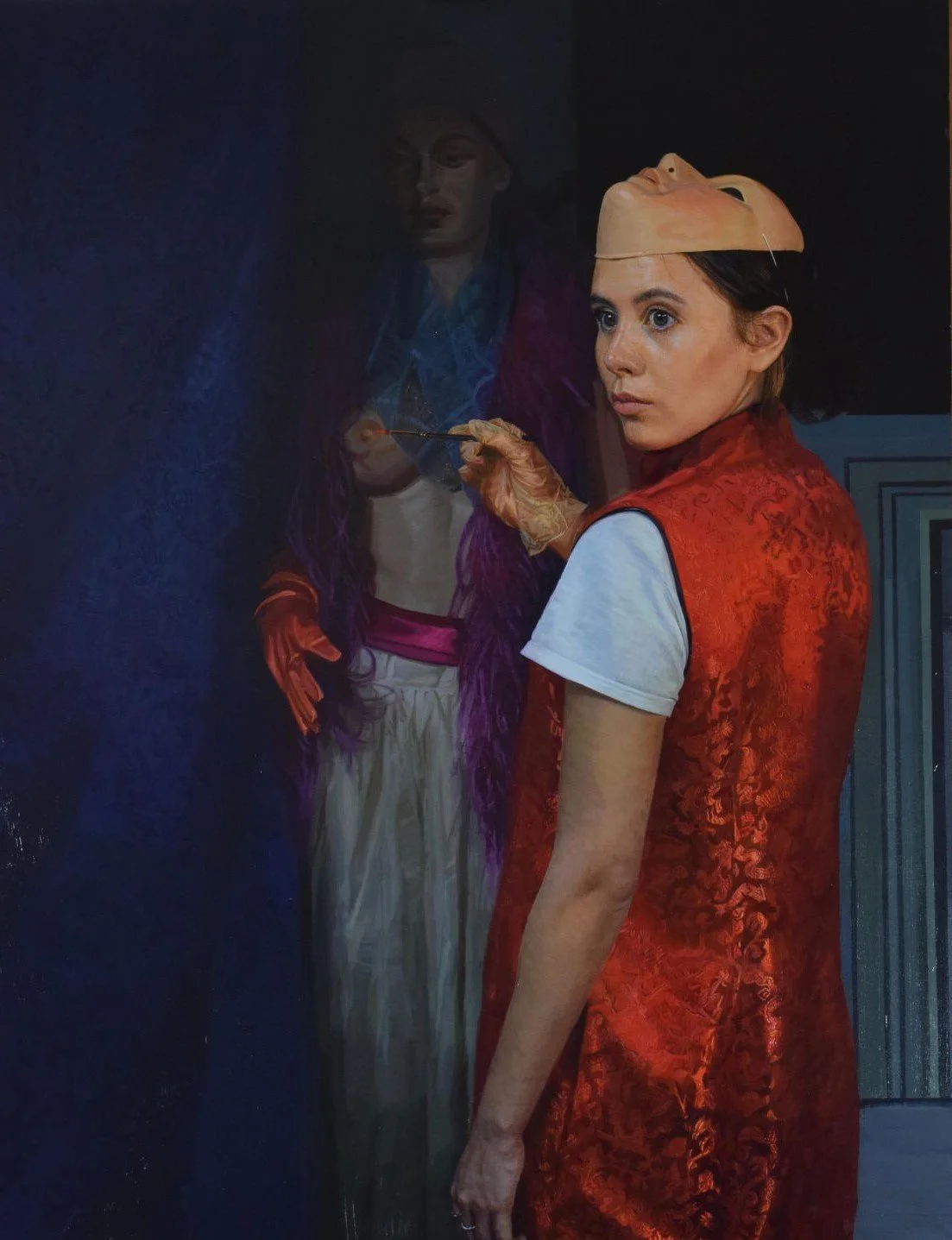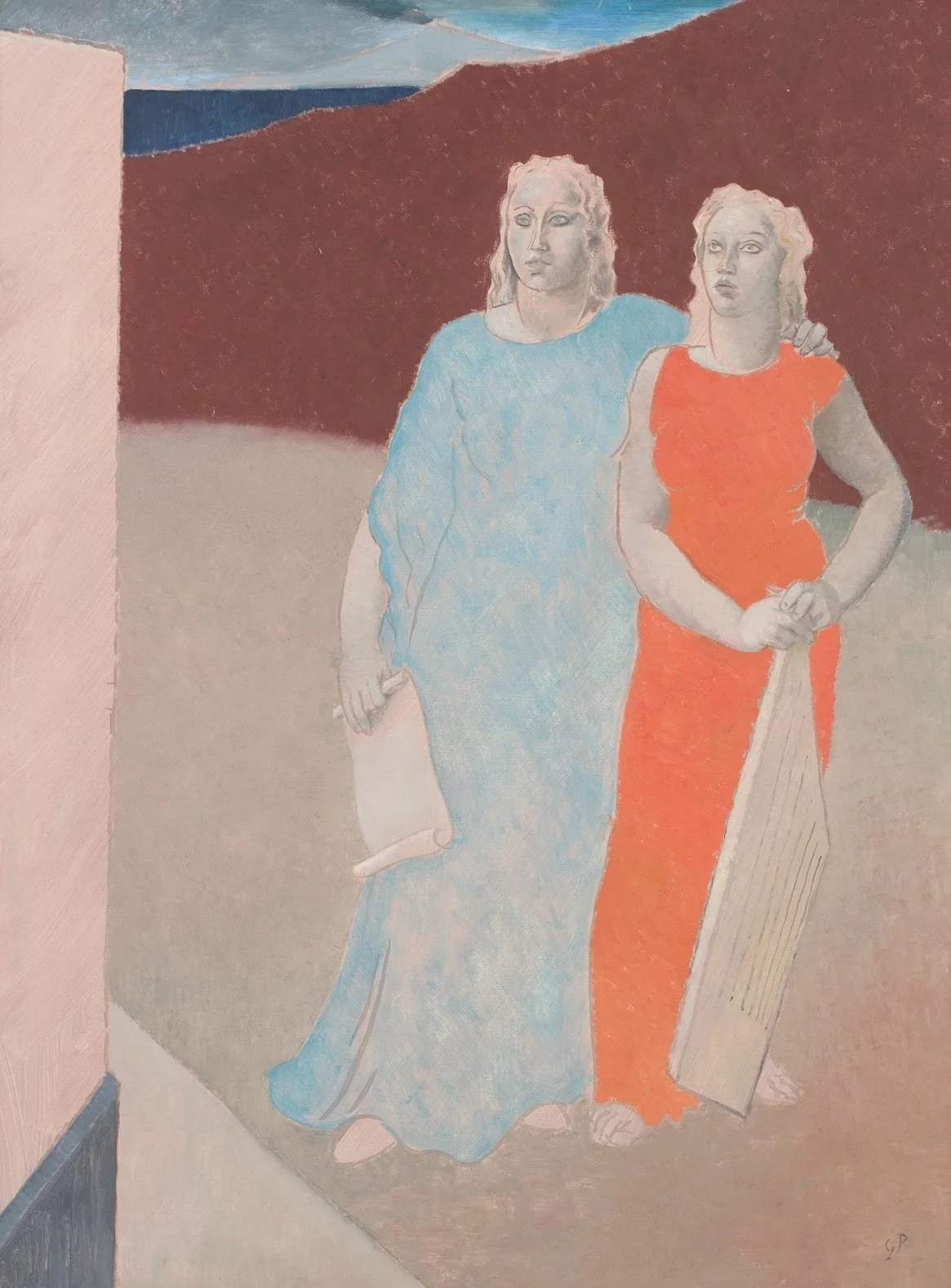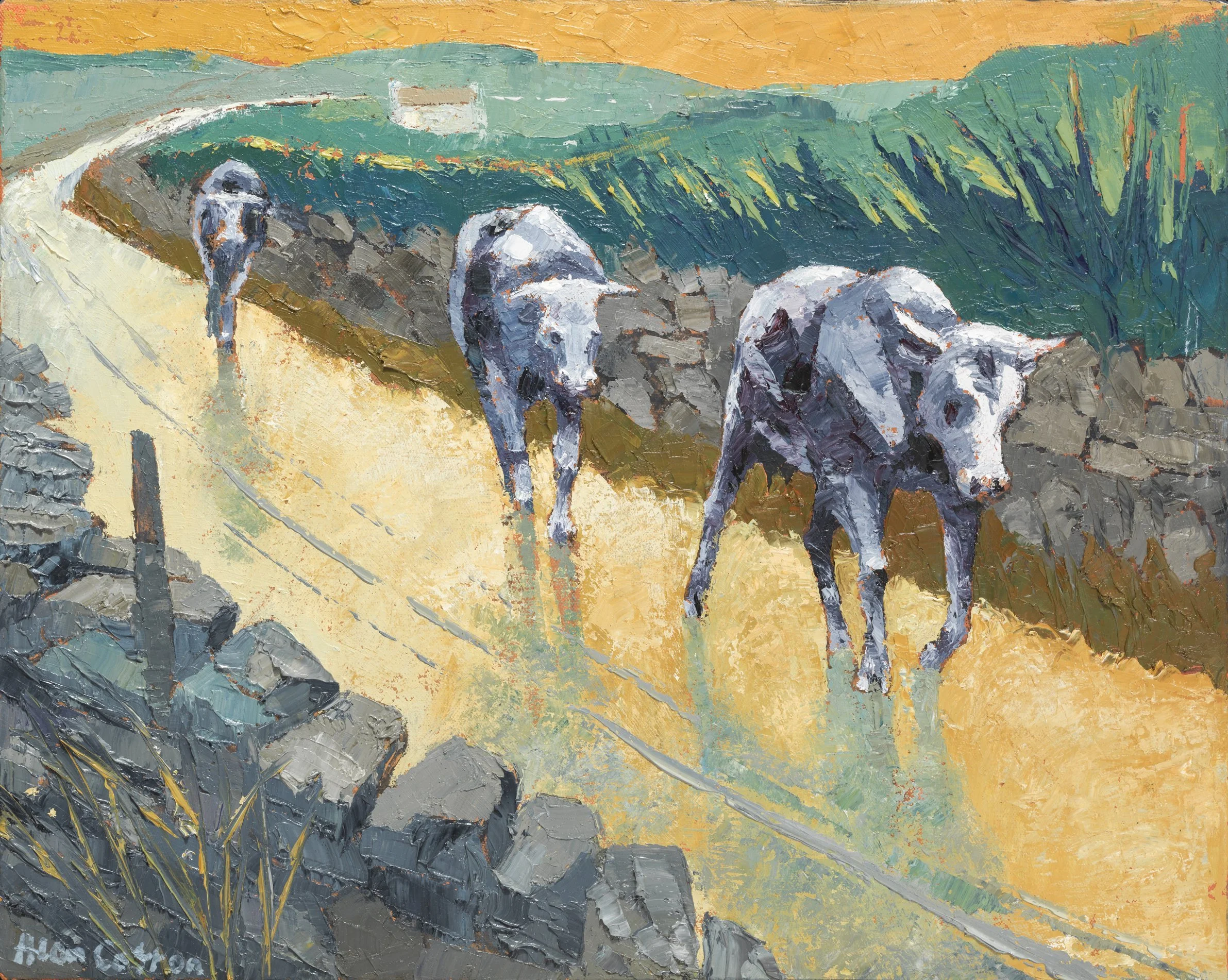British Art News
The latest news in Modern and Contemporary British Art.
by Alex Leith
SEASON’S GREETINGS!
We’d like to wish you a very merry Christmas, with this season’s-greetings card created by David Jones in December 1926, a very rare wood-engraving print, courtesy of Dominic Kemp in association with Austin/Desmond Fine Art. It is a proof of a card Jones was asked to design, but was never used.
ALBERTO MORROCCO: SUNSHINE ON DUNDEE
‘Alberto painted as an Italian operatic tenor sings, that is with a passionate theatricality and always con brio.’ So wrote artist and lecturer David McClure, about his compatriot and near-contemporary Alberto Morrocco, one of the leading figures of 20th-century Scottish art.
CANDIDA STEVENS: WATER & WAYS
The latest exhibition at Candida Stevens’ eponymous Chichester gallery, Water & Ways, is subtitled ‘an exhibition of artworks inspired by Sussex, post war and contemporary’. It acts as an interesting counterpoint to the big autumn show at Pallant House Gallery, just down the road, entitled Sussex Landscape: Chalk, Wood and Water (see ‘Bill Brandt’s geological nudes’, below).
STANLEY DONWOOD: SACRED CARTOGRAPHY
One day Stanley Donwood will be written about without mention of the fact that he has been responsible for all Radiohead’s album-cover artwork since they started. Although not in this piece. Not yet.
EDWARD SEAGO: A CONJUROR’S SKETCHBOOKS
Before his death, in 1974, the post-impressionist landscape painter Edward Seago wrote in his will that one third of the paintings stored in his studio in Norwich should be destroyed. Luckily for the world, Seago was a prolific artist, and around 19,000 watercolours and 300 oil paintings remain.
NIGEL HENDERSON: HMS INVINCIBLE
You might say the collage artist and photographer Nigel Henderson was well connected.His Bohemian mother set up Peggy Guggenheim’s London gallery in 1938; through her he met Marcel Duchamp, Max Ernst and Yves Tanguy, and saw his early collage work exhibited alongside that of Picasso, Braque and Gris.
BILL BRANDT’S GEOLOGICAL NUDES
Bill Brandt escaped from Germany in the 30s and made his name as a photographer chronicling the customs of his adopted compatriots in books such as The English at Home (1936) and articles in illustrated magazines such as Lilliput and Picture Post.
“HE LEFT ME FOR A BETTER PAINTER”.
Lucian Freud and John Craxton met at art college in 1941 when they were 19 years old, and they were soon living together, painting together, and drinking together, enjoying what there was to enjoy in wartime London, both exempt from military service.
SIMON CASSON: ‘FRAGONARD MEETS RICHTER’
Simon Casson went to the National Gallery, aged ten, and stood in front of a Titian. He hasn’t been the same since.
ADRIAN HEATH: A RETROSPECTIVE
If Adrian Heath’s audacious attempt to escape from Stalag 383 in Bavaria in 1942 had succeeded, British abstract art might have taken a different course. As it was, he was captured, and put into solitary confinement, where he experimented with abstract techniques (there wasn’t much to draw). Once out, he met fellow-POW Terry Frost, and encouraged him to develop his artistic style.
WILLIAM JOHNSTONE | RETROSPECTIVE
In his 1967 book The Company I Have Kept, the poet and author Hugh McDairmid called his friend William Johnstone (1897-1981) ‘the bad boy of Scottish art’ and ‘not only the most important but the only important living Scottish artist’.
SIMON LEWTY | CALLIGRAPHICAL PALIMPSESTS
“Should I call it presence in absence, or absence in presence, or both? It’s something of that order.”
Was there a more enigmatic 21st-century British artist than Simon Lewty, whose work was evolving in mysterious ways right until his death, aged 80, in January?
ANITA KLEIN | EVERYDAY DIVINITY
It would be easy to walk past an Anita Klein work, without paying it the scrutiny it deserves.
On the face of it, her subject matter is quotidian, familial, twee even. A dark-haired, early-middle-aged female figure is usually involved in some sort of activity with her friends or family: planting seedlings; playing snakes and ladders; swimming in the rain, stirring sugar into an espresso.
EMILY YOUNG | SHATTERED VISAGES
Emily Young has created four sculptures especially for British Art Fair, to be shown by Willoughby Gerrish. The largest of these, Earth Dreamer I, will be erected outside Saatchi Gallery in Duke of York Square, for the duration of the weekend and until October 26.
MARCELLE HANSELAAR | ‘THE INNER AND THE OUTER’
‘The magic of painting’, states the London-based Dutch artist Marcelle Hanselaar, in a recent interview with FAD Magazine, ‘is that you can show the inner and the outer, the suggestive or the interpretative, on the same plane’.
CHARLES GINNER | CAVE PAINTING
The Cave of the Golden Calf, London’s first-ever night club, was opened in July 1912 by writer and socialite Frida Strindberg, as a space for artists and other bohemian types looking for a spot which, as the New York Times put it, was ‘brazenly expressive of the libertarian pleasure principle’. It was in a low-ceilinged basement in Heddon Street in Soho (formerly a draper’s studio) and great attention was paid to its interior design, with primitivist wall paintings by Wyndham Lewis, Spencer Gore and Charles Ginner.
WEST WALTON | JOHN PIPER’S LOVE OF ‘EXQUISITE DECAY’
John Piper (1903-1992) was a remarkable polymath, a writer and editor as well as a prolific artist, who worked across numerous genres and styles, from abstract painting to opera set design to stained-glass windows. But he will, perhaps, be best remembered as a draughtsman and painter of gloweringly picturesque landscapes, with a penchant for historic English buildings. And particularly buildings which had deteriorated into what he described as ‘an exquisite state of decay’.
PORTAL PAINTERS | PETER LAYZELL
Portal Painters have been building up their stable of artists for over 60 years, and they have a distinct MO, when it comes to choosing who to represent. The gallery use the term ‘idiosyncratic’: their painters’ styles are instantly recognisable, once you have seen a piece of their work.
GLYN PHILPOT | FLESH AND SPIRIT
On the face of it, the Glyn Philpot show at Pallant House Gallery in Chichester, Flesh and Spirit, tells the story of Philpot ‘going Picasso’ (as The Scotsman saw it), shapeshifting from a fashionable, traditional and hugely successful society portrait painter, into an experimental Modernist
ALAN COTTON | LIGHT IS LIFE
“The coast is a drama,” says landscapist Alan Cotton, “where the sea is constantly attacking the land: trying to destroy it. That dynamic… is like a life force.” Brought up in a working-class home in Redditch, the acclaimed landscape painter didn’t even see the sea until he was 14.






